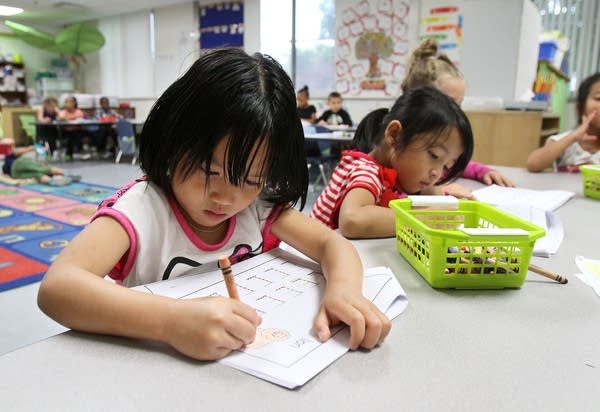Growing Karen population brings new round of changes to Austin, Minn.

Paw Soe, left, and Mi Meh work on their language lessons at Woodson Kindergarten Center in Austin.
Alex Kolyer / For MPR News
Go Deeper.
Create an account or log in to save stories.
Like this?
Thanks for liking this story! We have added it to a list of your favorite stories.


